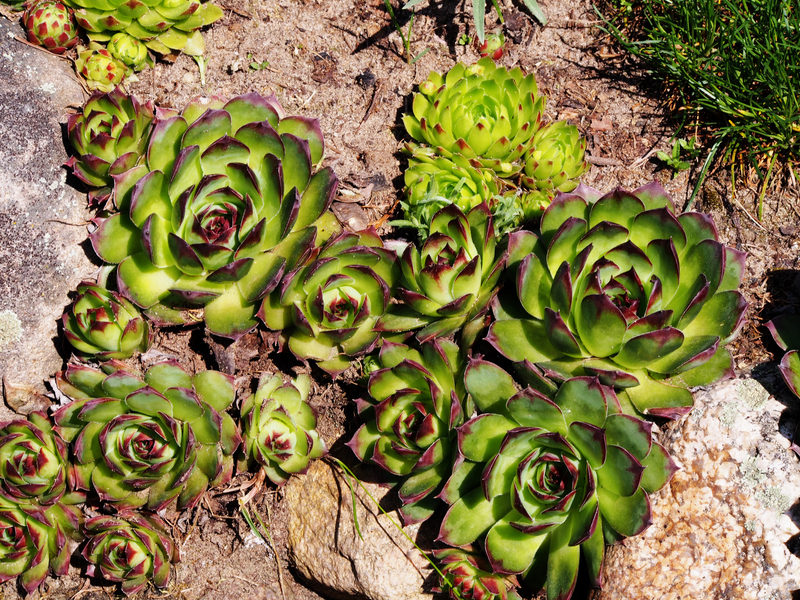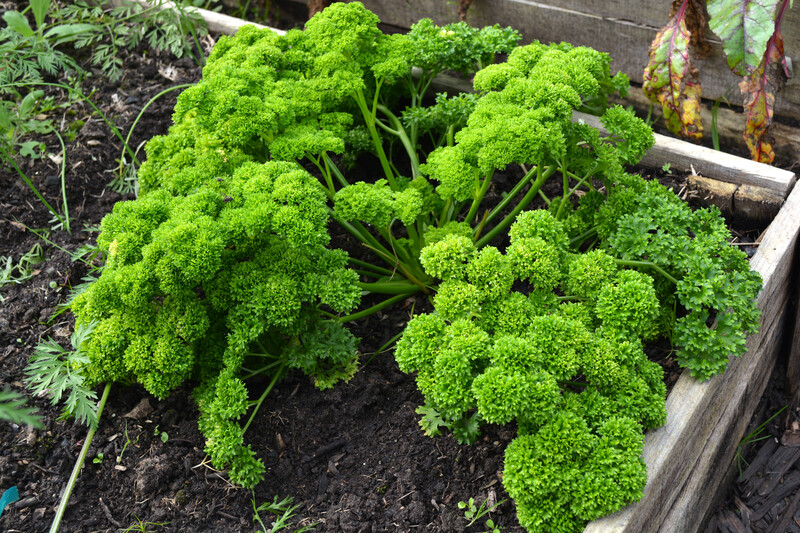The Ultimate Lawn Care Guide to Prevent Summer Drought Damage
When summer temperatures peak and rainfall becomes scarce, every lawn owner faces the dreaded threat of drought damage. Maintaining a lush, healthy yard during these challenging months may seem impossible, but with strategic preparation and care, you can keep your lawn green, resilient, and beautiful throughout the hottest days of summer. This guide covers everything you need to know for effective lawn care to prevent summer drought damage, ensuring your turf not only survives but thrives.
Understanding the Impact of Summer Drought on Lawns
Summer drought can cause significant stress to your lawn, resulting in brown patches, thin turf, and increased susceptibility to pests and diseases. Learning the signs and causes of drought damage is the first step in protecting your outdoor oasis.
How Drought Affects Your Grass
- Dehydration: Lack of water slows down the grass's growth and causes wilting, browning, and ultimately dormancy.
- Soil Hardening: Without adequate moisture, soils compact and become less able to absorb water when it finally does rain.
- Weakened Roots: Drought-stressed lawns develop shallow roots, making them more vulnerable to heat and future droughts.
- Increased Competition: Weeds and pests thrive in weakened, dry lawns where the grass has lost its vigor.

Step-by-Step Guide: How to Prevent Summer Drought Damage on Your Lawn
With careful planning and thoughtful maintenance, your lawn can remain lush and green even as temperatures soar. Here's your comprehensive lawn care guide to beat the heat:
1. Choose Drought-Tolerant Grass Types
Selecting the right grass species is the foundation for a healthy, drought-resistant lawn. Some grass varieties naturally withstand heat and drought much better than others.
- Bermuda Grass: Ideal for hot, sunny climates. Bermuda is known for its excellent drought resistance and rapid recovery.
- Zoysia Grass: Forms a thick carpet, tolerates drought, and requires less water than cool-season grasses.
- Buffalo Grass: Native to the American prairies, buffalo grass is extremely drought-tolerant.
- Tall Fescue: Among cool-season grasses, tall fescue boasts deep roots and impressive heat resilience.
- St. Augustine Grass: Thrives in heat and can tolerate some drought, commonly used in southern regions.
Tip: If you're installing a new lawn or overseeding, opt for grass varieties suited to your region's climate and drought patterns.
2. Perfect Your Watering Techniques
Water is a precious resource during drought. Instead of frequent, shallow watering, aim for deep and infrequent irrigation to promote strong roots and efficient water usage.
- Water Early Morning: The best time to irrigate is before 10 a.m. when temperatures are cooler and less water evaporates.
- Apply 1 Inch Weekly: Give your lawn a deep soak, aiming for about 1 inch of water per week (including rainfall).
- Use Soaker Hoses or Drip Irrigation: These methods deliver water directly to the roots, minimizing waste.
- Test Soil Moisture: Insert a screwdriver into the soil - if it penetrates easily up to six inches, your lawn has enough moisture.
Remember: Overwatering can be just as harmful as underwatering. Monitor weather reports and adjust your schedule as needed.
3. Improve Your Soil Health
Healthy, well-aerated soil retains moisture and provides the ideal environment for strong grass roots.
- Aerate Your Lawn: Annually using a core aerator to break up compacted soil and improve water penetration.
- Add Organic Matter: Incorporate compost into your soil to enhance moisture-holding capacity.
- Test and Amend Soil: Use a soil test kit to ensure the right pH and nutrient levels. Amend with lime or fertilizer as necessary.
4. Mow Wisely to Beat the Heat
Lawn mowing practices during summer can have a significant impact on resilience against drought.
- Keep Grass Taller: Set mower blades high (3-4 inches) to shade roots and reduce evaporation.
- Sharpen Blades: Dull mower blades tear turf, causing additional stress and increasing the risk of disease.
- Leave Clippings: Grass clippings act as a natural mulch and help retain soil moisture.
- Avoid Mowing During Dry Spells: If the lawn is dormant or extremely dry, skip mowing until recovery.
5. Mulch to Lock in Moisture
Mulching isn't just for flower beds - applying a thin layer of organic material to your lawn or around trees and garden beds can substantially reduce water evaporation.
- Benefits of Mulching: Helps keep the soil cool, protects roots, and minimizes stress caused by extreme heat.
- Best Mulching Materials: Use grass clippings, compost, wood chips, or shredded leaves for an eco-friendly solution.
Tip: Avoid piling mulch against tree trunks or over the crown of grass plants. Keep it evenly distributed.
6. Fertilize with Care
Proper fertilization is crucial in preparing your grass for drought, but over-fertilizing can worsen drought stress.
- Apply Slow-Release Fertilizer: Use a gentle, slow-release formula in early spring or fall to build root strength before summer hits.
- Avoid Summer Application: Fertilizing during drought can burn grass and increase its thirst for water.
- Focus on Potassium: This nutrient improves drought resilience, so look for fertilizers with a higher potassium ratio (the last number in the N-P-K values).
7. Manage Weeds and Pests
Weeds and pests thrive when your lawn is weak - and both can exacerbate drought damage.
- Manual Removal: Hand-pull weeds to minimize competition for water and nutrients.
- Spot Treatment: Use targeted herbicides only when necessary, as many chemicals can stress grass further during drought.
- Pest Inspection: Monitor for signs of chinch bugs, grubs, or sod webworms, and address infestations promptly.
Year-Round Maintenance Tips to Prevent Drought Stress
Spring Preparations
- Dethatch: Remove excess thatch to improve air and water movement in the soil.
- Early Overseeding: Fill in bare spots with drought-tolerant grass seed blends.
- Pre-Emergent Weed Control: Prevent weeds from establishing before summer arrives.
Summer Best Practices
- Limit Traffic: Minimize walking and activity on heat-stressed lawns to protect grass blades and roots.
- Raise Mower Height: Taller grass provides better ground cover.
- Conserve Water: Use rain barrels or graywater systems where allowed to supplement irrigation.
Fall and Winter Lawn Care
- Aeration and Fertilization: Focus on strengthening root systems so the lawn is prepared for next summer's heat.
- Leaf Management: Remove heavy leaf cover to prevent smothering of grass.
Signs Your Lawn is Suffering from Drought Damage
Stay alert to early warnings of summer drought stress:
- Browning: Large patches of brown or yellow grass signal dehydration.
- Crunchiness: Grass blades feel crispy and break underfoot.
- Footprints: Grass does not spring back after walking.
- Slow Growth: The lawn appears thin and stunted.
Treat the problem early to minimize long-term damage and help your lawn recover faster when rainfall resumes.
What to Do if Your Lawn Goes Dormant
Sometimes, even the best care can't prevent your lawn from entering a state of dormancy during severe drought. Don't panic - this is a natural survival response for most grasses.
- Limit Watering, Not Stop Completely: Apply 0.25-0.5 inches every 2-3 weeks to keep roots alive.
- Avoid Fertilizer and Herbicides: Wait until growth resumes to prevent further stress.
- Keep Off the Grass: Avoid heavy traffic until recovery is evident.
- Resume Normal Care Slowly: As temperatures drop and rain returns, gradually return to regular watering and mowing schedules.
Expert FAQs on Lawn Drought Care
How can I tell if my lawn is dormant or dead?
Dormant grass turns brown but maintains a firm root system and should start to green up with water and cooler weather. Dead grass, however, pulls up easily and does not recover.
Is it better to water in the morning or evening?
Watering in the early morning is best because the lawn has all day to dry, reducing risks of fungus and evaporation.
How long does it take a lawn to recover from drought?
Recovery times vary. Lawns with deep roots and proper care can recover within a few weeks of resumed watering; severely damaged lawns may require overseeding or renovation.

Bonus Tips: Sustainable & Smart Lawn Care during Summer Droughts
- Install Smart Irrigation Controllers: Automate your watering schedule to reduce waste and respond to real-time climate conditions.
- Practice Grasscycling: Leave grass clippings on the lawn after mowing to return nutrients and moisture to the soil.
- Consider Lawn Alternatives: Groundcovers, native grasses, or xeriscaping can reduce water needs and maintenance.
- Plant Shade Trees: Strategically placed trees will cool your lawn and help retain soil moisture.
Conclusion: Your Greenest Lawn Awaits
Preventing summer drought damage is a year-round commitment that begins with grass selection and continues through smart watering, mowing, soil care, and sustainable practices. By following this ultimate lawn care guide, you'll enjoy a vibrant, drought-resistant yard no matter how high the temperature rises.
Invest in proper lawn maintenance now to save water, reduce costs, and grow the healthiest grass possible through every summer season.
Commit to these best practices, and your neighbors will be green with envy come next drought!